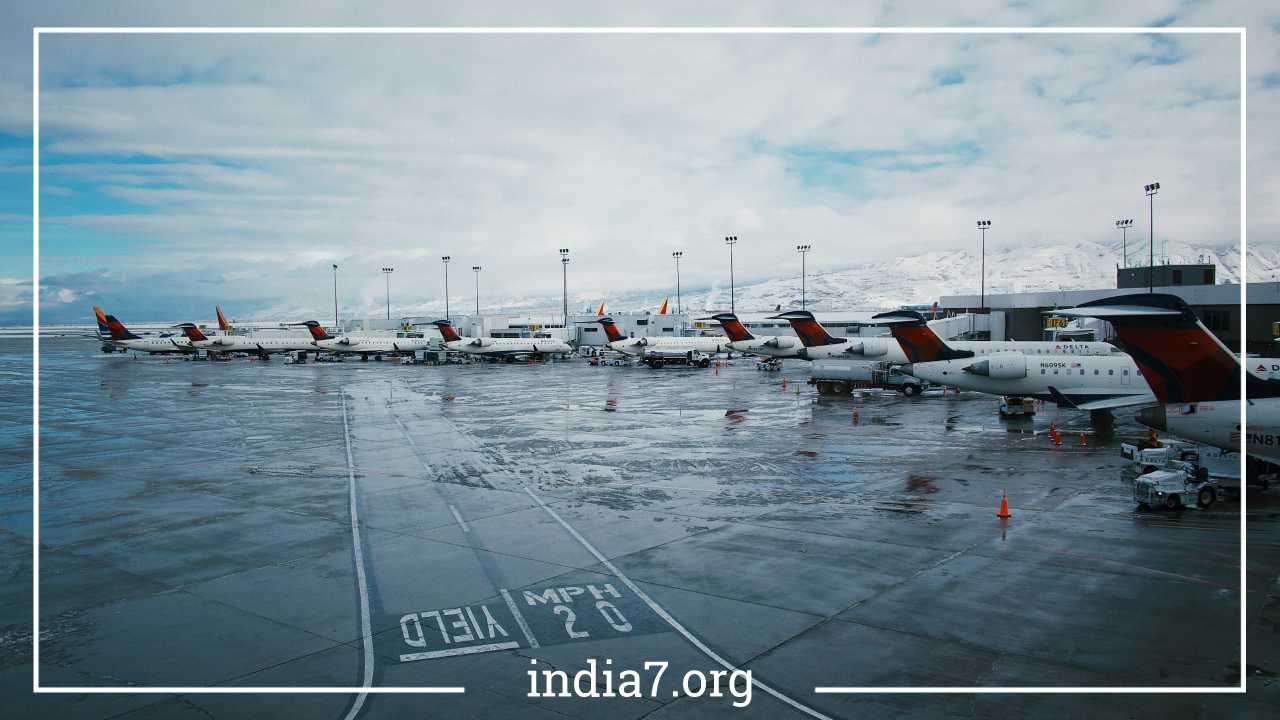Unlocking the World: Services and Features at International Airports

International Airports
International airports serve as crucial hubs for travelers embarking on journeys to distant destinations. Whether you’re a seasoned globetrotter or a first-time international traveler, understanding the services and features commonly found at these airports can enhance your travel experience. International airports aren’t just places to catch flights; they are multifaceted facilities designed to cater to the diverse needs of travelers from around the world.
Before we delve into the details of the services and features typically available at international airports, it’s essential to recognize that no two airports are exactly alike. While certain amenities are widespread, the specific offerings and quality of services can vary significantly between airports. Therefore, if you’re seeking detailed information about a specific international airport, it’s advisable to contact that airport directly or visit its official website for the most up-to-date information.
1. Currency Exchange Services
One of the most common and essential services provided by international airports is currency exchange. Given that different countries have their own currencies, travelers often need to exchange their money for the local currency of their destination. Currency exchange counters and kiosks can typically be found in prominent locations throughout the airport terminals.
These currency exchange services offer several benefits to travelers:
- Convenience: Currency exchange counters are usually open during airport operating hours, making it convenient for travelers arriving or departing at any time.
- Avoiding Currency Surprises: Exchanging currency before your trip allows you to have some local cash on hand, which can be useful for immediate expenses like transportation and meals upon arrival.
- Comparative Rates: Many currency exchange counters provide competitive exchange rates, enabling you to get a fair deal for your money.
It’s important to note that while currency exchange services are widespread, rates and fees can vary, so it’s wise to compare rates or inquire about any fees before exchanging your money.
2. Full-Service Banks
In addition to currency exchange services, international airports often host full-service banks. These banks offer a range of financial services, including:
- Currency Exchange: Like dedicated currency exchange counters, full-service banks can assist with currency conversion, but they may also offer more competitive rates and a broader range of currencies.
- ATMs: You can withdraw money from your home bank account using ATMs located in the airport. These ATMs often support international transactions, providing access to cash in the local currency of your destination.
- Traveler’s Checks: Some banks within international airports may offer traveler’s checks, which are a secure and convenient way to carry money while traveling.
- Banking Services: Depending on the airport and bank, you may also be able to perform other banking transactions, such as opening accounts or conducting financial inquiries.
Full-service banks within international airports typically have extended hours of operation, ensuring access for travelers arriving or departing at various times.
3. Mail Service Centers
International airports around the world often feature mail service centers that serve various purposes, enhancing the convenience and efficiency of your travel experience:
- Mailing Items Home: One of the primary functions of airport mail service centers is to allow travelers to send items back to their home countries, particularly items that may be prohibited on international flights. This service is particularly valuable if you’ve purchased items that can’t be carried on board or if you’re looking to mail postcards or souvenirs to friends and family.
- Prohibited Items: Travelers can use these centers to mail items that are prohibited aboard an international flight, avoiding the inconvenience of surrendering them to airport security or discarding them.
- Flexible Hours: Many airport mail service centers maintain flexible operating hours, accommodating travelers with early morning or late-night flights.
In recent years, self-service mail centers have become increasingly popular, allowing travelers to access mailing services independently.
4. Wireless Internet Access
Modern travelers often rely on staying connected while on the go, and many international airports recognize this need by providing wireless internet access. This amenity enables you to access the internet, check emails, browse the web, and stay connected with loved ones without the constraints of physical cables or phone lines.
Here’s what you need to know about wireless internet access at international airports:
- Availability: While not all international airports offer free wireless internet, a growing number are providing this service to passengers. The availability of free Wi-Fi can vary, so it’s a good idea to check with the airport in advance.
- Passenger Lounges: Many airports with passenger lounges, including those associated with specific airlines or membership programs, offer complimentary Wi-Fi access to eligible travelers.
- Connectivity: Wi-Fi access typically covers the entire airport terminal, including waiting areas, departure gates, and some airline lounges. This connectivity allows you to use your laptop, tablet, or smartphone to stay connected while waiting for your flight.
- User Experience: The process of connecting to airport Wi-Fi is generally straightforward. Passengers typically need to select the airport’s Wi-Fi network, agree to terms and conditions, and sometimes provide basic information before gaining access.
Having access to wireless internet can be particularly valuable if you’re relying on digital resources during your journey, such as online maps, e-tickets, or travel-related apps.
5. Retail Shops and Eateries
International airports have evolved into more than just transportation hubs; they often resemble small malls with a wide range of retail shops and dining options. These establishments cater to a diverse array of traveler preferences and needs:
- Shopping: Duty-free shops, boutiques, and department stores offer a variety of products, including clothing, electronics, cosmetics, souvenirs, and more. These shops often feature well-known brands and exclusive items.
- Dining: International airports boast an extensive selection of restaurants, cafes, and eateries. Travelers can savor cuisines from around the world, whether it’s a quick snack, a coffee, or a full sit-down meal. Vegetarian, vegan, and gluten-free options are frequently available to accommodate dietary preferences.
- Duty-Free Shopping: Duty-free shops are a staple at international airports, allowing travelers to purchase items such as alcohol, tobacco, perfumes, and cosmetics at reduced tax rates. These shops are typically located in the international departure areas and require passengers to present a valid boarding pass.
- Convenience Stores: You can find convenience stores that stock essentials like snacks, beverages, toiletries, and reading materials, making it convenient for travelers to pick up last-minute items before their flights.
- Local Specialties: Some international airports showcase local culture and products by offering regional specialty stores, providing an opportunity for travelers to explore and purchase unique items.
The availability of retail shops and eateries at international airports can vary depending on the size and location of the airport. Larger airports often have a more extensive selection of options, while smaller airports may offer a more limited choice.
6. Lounge Areas
Many international airports provide designated lounge areas for travelers to relax and unwind between flights. These lounges offer a comfortable and tranquil environment where you can escape the hustle and bustle of the terminal. While some lounges are accessible through airline memberships or premium tickets, others are available to all passengers for a fee.
Key features of airport lounges include:
- Comfortable Seating: Lounges typically offer plush seating, including sofas, armchairs, and quiet corners for relaxation.
- Refreshments: Complimentary snacks and beverages, including coffee, tea, soft drinks, and sometimes alcoholic beverages, are often available.
- Wi-Fi: Most lounges provide free Wi-Fi access, allowing you to stay connected while enjoying a more private setting.
- Reading Materials: Lounges usually offer a selection of newspapers and magazines for leisurely reading.
- Business Facilities: Some lounges are equipped with business amenities such as workstations, printers, and fax machines, catering to travelers who need to stay productive.
- Showers: Premium lounges often include shower facilities, which can be particularly refreshing during long layovers or after extended flights.
Access to airport lounges can enhance your travel experience, providing a peaceful retreat where you can recharge before your next flight.
7. Baggage Services
International airports typically offer a range of baggage-related services to assist travelers with their luggage needs:
- Luggage Storage: Travelers can use luggage storage services to temporarily store their bags if they have a long layover or want to explore the airport without cumbersome baggage.
- Baggage Wrapping: Baggage wrapping services are available to protect your luggage from damage and tampering during your journey.
- Lost and Found: If you’ve lost an item or your baggage, airports often have a dedicated lost and found department to help you recover your belongings.
- Excess Baggage Handling: For passengers with excess baggage, international airports may provide services to facilitate the check-in and payment process for additional luggage.
- Baggage Carts: Convenient baggage carts are often available throughout the airport for travelers to transport their luggage easily.
These baggage services can be particularly valuable when you have specific luggage needs or encounter unexpected situations during your journey.
8. Transportation Options
International airports are gateways to cities and regions, and as such, they offer various transportation options to help travelers reach their final destinations:
- Taxis: Taxi stands are typically located outside the arrivals area, providing a convenient way to reach your hotel or other destinations within the city.
- Shuttle Services: Some international airports offer shuttle services to nearby hotels and popular destinations. These services often require reservations and may have set schedules.
- Rental Car Counters: Car rental companies have counters within the airport terminals, allowing travelers to rent vehicles for the duration of their stay.
- Public Transportation: Many international airports are well-connected to public transportation networks, including buses, trams, and trains. These options can be cost-effective and efficient for reaching various parts of the city.
- Ride-Sharing: Ride-sharing services like Uber and Lyft are available at many international airports, providing an alternative to traditional taxis.
- Airport Express Services: Some cities have dedicated airport express buses or trains that offer direct routes to key destinations, making it easy for travelers to access the city center.
The availability and convenience of transportation options can vary depending on the airport’s location and the city it serves. It’s advisable to research transportation choices in advance to plan your journey efficiently.
9. Travel Information Desks
International airports often have travel information desks staffed by knowledgeable personnel who can provide assistance with various aspects of your trip:
- Flight Information: Travel information desks can help you with flight-related inquiries, including checking the status of your flight, gate information, and connecting flight details.
- Transportation Guidance: The staff can provide guidance on the most convenient and cost-effective transportation options to reach your destination within the city.
- Tourist Information: If you’re visiting a new city, these desks can offer maps, brochures, and information on local attractions, tours, and cultural activities.
- Language Assistance: Travel information desks may have multilingual staff who can assist travelers who do not speak the local language.
These desks serve as valuable resources for travelers seeking information and assistance during their journey.
10. Customs and Immigration Facilities
International airports are entry points into a country, which means they are equipped with customs and immigration facilities to process incoming travelers:
- Immigration Control: After disembarking from an international flight, you will typically go through immigration control, where your passport, visa, and other travel documents will be inspected.
- Customs Inspection: Customs officers may inspect your baggage to ensure you are not carrying prohibited or restricted items into the country.
- Visa Services: Some airports offer visa services for travelers who require visas to enter the country. These services can be particularly helpful for last-minute travelers.
Navigating through customs and immigration is a standard procedure for international travelers and is essential for ensuring the security and compliance of international travel.
11. Medical and Health Services
The well-being of travelers is a priority at international airports. To address medical needs and health concerns, many airports provide the following services:
- Medical Clinics: Some airports have on-site medical clinics staffed by healthcare professionals who can provide medical assessments, treatments, and prescriptions if needed.
- Pharmacies: Pharmacies within international airports offer a range of over-the-counter and prescription medications, as well as health-related products.
- Emergency Medical Response: In the event of a medical emergency, international airports have protocols in place to respond quickly, including access to defibrillators and emergency medical personnel.
- Travel Health Information: Information about health precautions, vaccinations, and travel-related health advice may be available to help travelers stay informed and healthy during their journey.
It’s important for travelers to be aware of the location of medical facilities and services within the airport, as well as any specific health requirements or recommendations for their destination.
12. Children’s Play Areas and Family Services
International airports aim to provide a family-friendly environment for travelers with children. To accommodate families, many airports offer the following amenities:
- Children’s Play Areas: Play areas equipped with age-appropriate toys and activities are often available to keep young travelers entertained.
- Family Restrooms: Family restrooms with changing tables and amenities for parents traveling with infants are commonly found in airport terminals.
- Stroller Rentals: Some airports offer stroller rental services, making it more convenient for parents to navigate the terminal with young children.
- Child-Friendly Dining: Many airport restaurants and eateries provide child-friendly menus and dining options suitable for families.
These amenities aim to make international travel more comfortable and enjoyable for families with children.
13. Accessibility Services
International airports strive to be inclusive and accessible to travelers with disabilities or special needs. To ensure equitable access, airports typically provide:
- Wheelchair Assistance: Wheelchair services are available for travelers with mobility challenges. Airports often have designated assistance counters or phone numbers for requesting wheelchair assistance in advance.
- Accessible Facilities: International airports are designed with accessible features, including ramps, elevators, accessible restrooms, and signage with braille and tactile information.
- Visual and Hearing Impairment Support: Some airports offer assistance for travelers with visual or hearing impairments, such as sign language interpreters or assistance animals.
- Assistive Technology: Airports may have assistive technologies in place, such as text-to-speech apps or accessible kiosks, to enhance the experience for travelers with disabilities.
Travelers with special needs should contact the airport in advance to arrange any necessary assistance or accommodations to ensure a smooth and comfortable journey.
14. Security and Safety Measures
Ensuring the safety and security of travelers is a top priority at international airports. Common security measures and services include:
- Security Screening: Passengers and their belongings are subject to security screening to detect prohibited items and ensure the safety of air travel.
- Surveillance and Monitoring: International airports have advanced surveillance systems and personnel to monitor terminal areas for safety and security purposes.
- Emergency Response: Airports are equipped with emergency response procedures and personnel to handle various situations, including medical emergencies, security incidents, and natural disasters.
- Lost and Found: If you’ve lost an item or encountered any security-related issues, airports often have a dedicated lost and found department or security office to assist you.
Security measures are in place to protect both passengers and airport staff and to maintain the overall safety and integrity of air travel.
15. Environmental Initiatives
In recent years, international airports have made significant strides in implementing environmentally sustainable practices and initiatives. These efforts aim to reduce the environmental impact of airport operations and contribute to global sustainability goals:
- Energy Efficiency: Airports are adopting energy-efficient technologies, such as LED lighting and solar panels, to reduce energy consumption.
- Waste Management: Many airports have robust recycling and waste management programs to minimize the environmental footprint of airport activities.
- Green Building Practices: New airport infrastructure often incorporates green building principles, such as sustainable materials and energy-efficient design.
- Public Transportation: Airports are increasingly connected to public transportation networks, making it easier for travelers to reach the airport using eco-friendly options.
- Carbon Offset Programs: Some airports offer carbon offset programs, allowing travelers to mitigate the environmental impact of their flights by investing in renewable energy or reforestation projects.
These environmental initiatives demonstrate the commitment of international airports to sustainability and responsible stewardship of the environment.
16. Art and Cultural Exhibits
Many international airports showcase local and international art and cultural exhibits within their terminals. These installations not only provide aesthetic value but also offer travelers a glimpse into the culture and creativity of the region. Some airports even have dedicated art galleries or cultural centers where travelers can explore various forms of art, including paintings, sculptures, and multimedia displays.
Art and cultural exhibits at international airports contribute to a unique and enriching travel experience, allowing passengers to engage with art and culture while in transit.
17. Traveler Assistance Services
International airports often provide assistance services to travelers who may require additional support:
- Multilingual Staff: Airports may have multilingual staff members who can assist travelers in various languages.
- Special Needs Assistance: Travelers with special needs or unique requirements can request assistance in advance or at the airport to ensure a seamless journey.
- Traveler Information Desks: Information desks are available to answer questions, provide directions, and offer guidance to travelers.
- Pet Relief Areas: Some airports have designated pet relief areas for travelers with service animals or pets.
- Airport Ambassadors: Some airports have volunteer airport ambassador programs, where local volunteers assist travelers with information and directions.
These assistance services contribute to a traveler-friendly environment, making international airports accessible and accommodating to a diverse range of passengers.
Final Remarks
International airports are vibrant and dynamic facilities that play a crucial role in facilitating global travel. They offer a wide array of services and features designed to enhance the comfort, convenience, and safety of travelers from all corners of the world. While the specific offerings can vary from one airport to another, common amenities such as currency exchange, full-service banks, wireless internet access, retail shops, eateries, and lounges create a comprehensive travel experience.
Furthermore, international airports address travelers’ diverse needs by providing services such as baggage assistance, transportation options, travel information, medical and health services, and accessibility accommodations. They are also increasingly committed to sustainability, art and culture, and assisting travelers with special requirements.
Navigating an international airport can be a seamless and enriching experience when you take advantage of these services and features. As you embark on your international journeys, it’s advisable to research and plan ahead to make the most of the amenities available at your chosen airport, ensuring a smooth and enjoyable trip from start to finish. International airports are more than just transit points; they are gateways to exploration, adventure, and discovery, reflecting the diverse cultures and destinations they serve.



